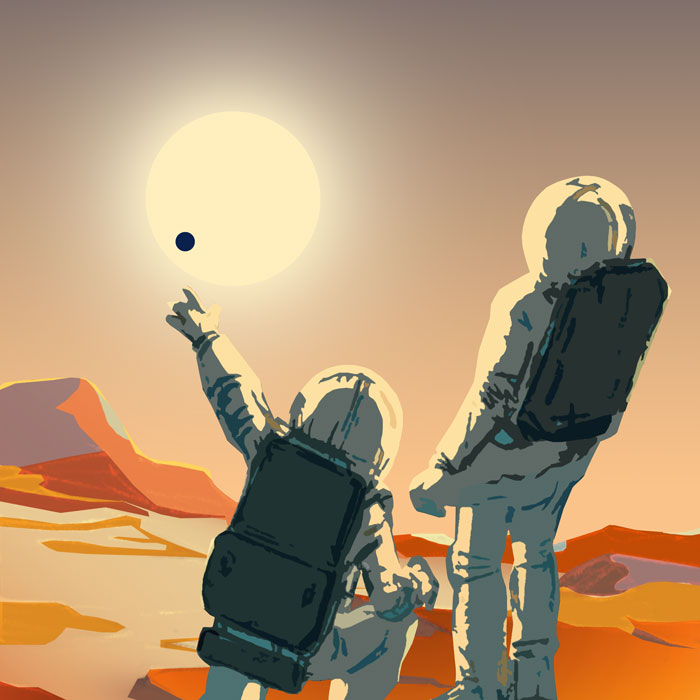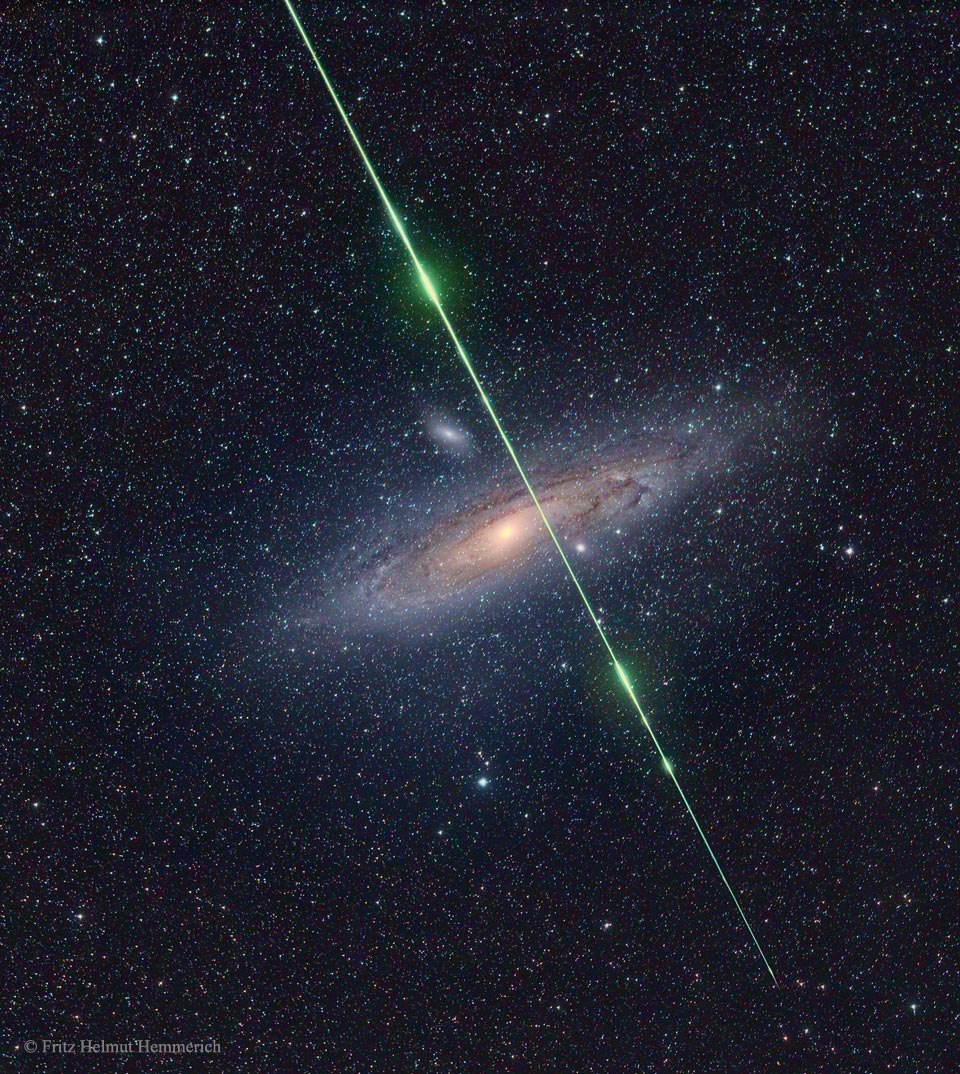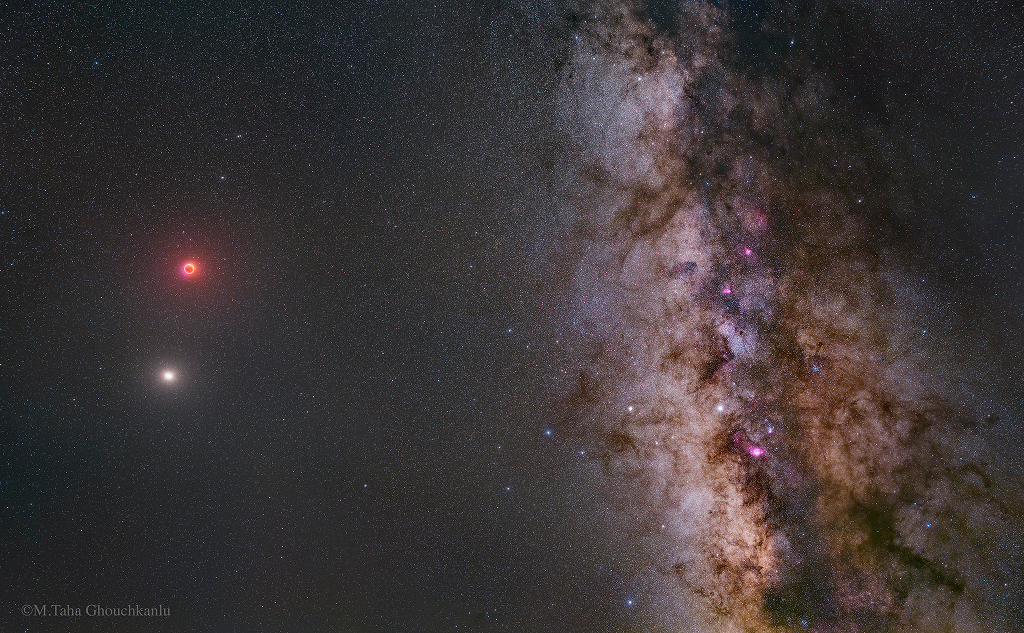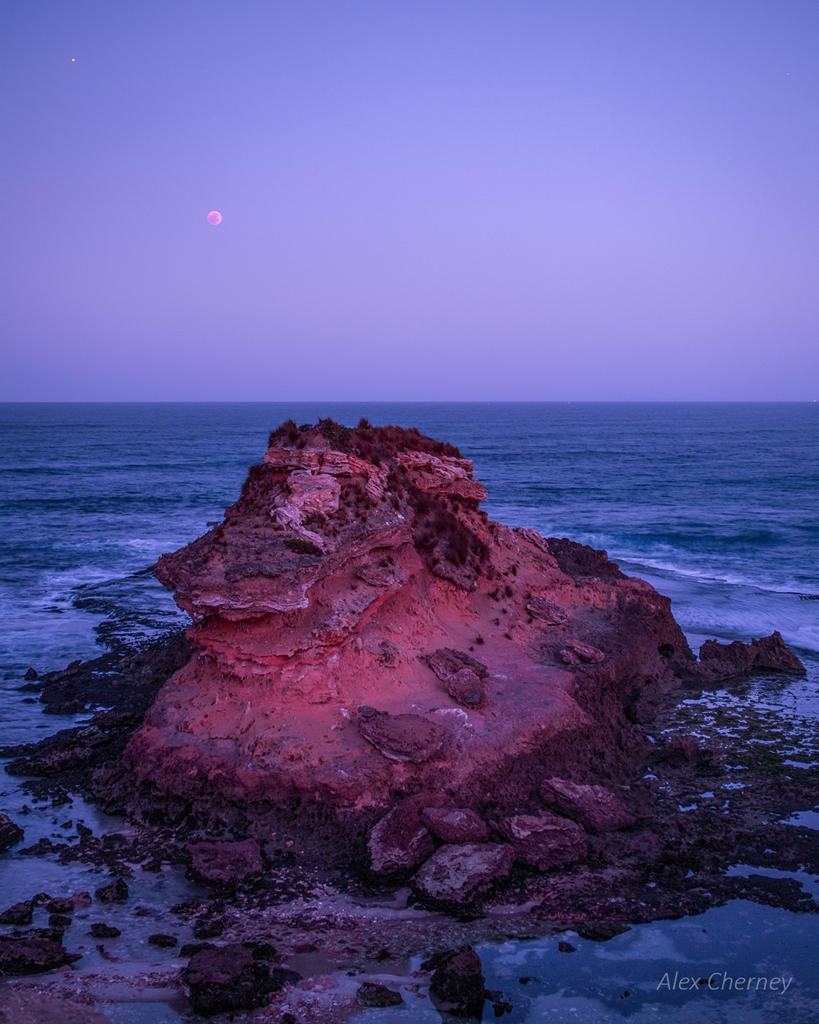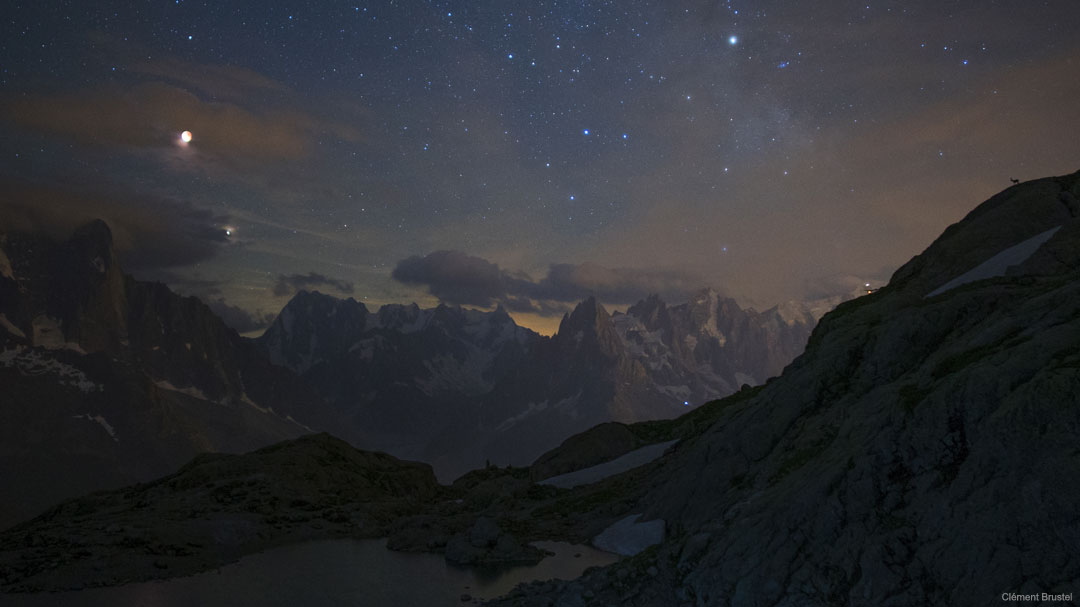
Image Credit & Copyright: Mark Hanson, Stan Watson Obs.
Explanation: Is there a bridge of gas connecting these two great galaxies? Quite possibly, but it is hard to be sure. M86 on the upper left is a giant elliptical galaxy near the center of the nearby Virgo Cluster of galaxies. Our Milky Way Galaxy is falling toward the Virgo Cluster, located about 50 million light years away. To the lower right of M86 is unusual spiral galaxy NGC 4438, which, together with angular neighbor NGC 4435, are known as the Eyes Galaxies(also Arp 120). Featured here is one of the deeper images yet taken of the region, indicating that red-glowing gas surrounds M86 and seemingly connects it to NGC 4438. The image spans about the size of the full moon. It is also known, however, that cirrus gas in our own Galaxy is superposed in front of the Virgo cluster, and observations of the low speed of this gas seem more consistent with this Milky Way origin hypothesis. A definitive answer may come from future research, which may also resolve how the extended blue arms of NGC 4435 were created.


